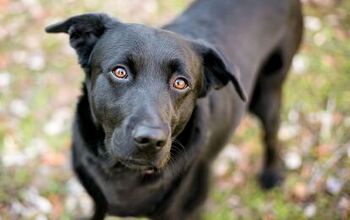Frengle


About Frengle
Frengles are fantastic little dogs that make great family pets. When properly trained and socialized, these pooches will protect you and love you forever. But before you bring a Frengle home, you should know about his stubborn side, which makes him a bit of a challenge when it comes to training.
Is the Frengle right for you and your family? Keep reading to learn about this breed and find out.
The Frengle is a cross between a purebred Beagle and French Bulldog.
The Frengle is a designer dog breed from the United States.
The Frengle is a cross between a purebred Beagle and French Bulldog.
To be sure your beloved pet is getting all of the nutrition that his body needs, choose from one of the many high quality dog foods that are available today. Talk to your vet about the best foods that are packed with whole food ingredients while avoiding artificial ingredients. Then give your Frengle anywhere from 1½ to 2 cups of dry food every day, splitting this amount up into a minimum of two servings. Reduce this amount, though, if you are also going to give your pooch a high quality canned food for dogs, as you don’t want him gaining excess weight.
Frengles are fantastic little dogs that make great family pets.
One of the most important things that you need to consider before introducing a Frengle into your family is the fact that this designer breed isn’t known for being easy when it comes to training. Teaching your dog the rules will take some time, as he can be stubborn. Owners who are already experienced in training dogs are best for the Frengle. Otherwise, you might need to invest in the services of a professional dog trainer.
When training your Frengle, always be calm, patient, and consistent. Remain firm, but keep the training positive by using a combination of rewards, treats, and praise so you can continue to encourage your pet. The sooner you start training your pet, the better.
A small-sized breed, the Frengle weighs between 18 and 30 pounds.
Frengles are known for being affectionate, smart, playful, alert, and social canines who make good watchdogs by alerting you to suspicious activity and being wary of strangers until they get to know them.
They also make wonderful family dogs because they are calm and gentle. With proper socialization, a Frengle will be a happy canine who will get along well with children of all ages, as well as other pets.
If you are in search of a smaller dog who enjoys snuggling with you and spending time indoors, the Frengle is a good choice. Your pet will like being the center of attention, so you should make it a point to spend plenty of time with him. He won’t like being left alone for extended periods of time, and he will need to get some activity in the great outdoors on a regular basis as well.
All hybrid canine breeds, including the Frengle, might be susceptible to the health problems that most commonly affect their parent breeds. However, there is no guarantee that your dog will have any of these conditions, and there is no way to predict an individual dog’s long-term health. Also, when a hybrid dog is purchased from a reputable breeder, he can be surprisingly hardy and healthy.
Some of the health problems that might affect the Frengle include eye conditions, cleft palate, epilepsy, intervertebral disk disease, Beagle dwarfism, patellar luxation, hypothyroidisma, Von Willebrand’s disease, hip dysplasia, elongated soft palate, allergies, ear infections, brachycephalic syndrome, and hemivertebrae.
The Frengle has an average lifespan of 12 to 15 years.
The Frengle is an active breed that will need to enjoy physical activity in the great outdoors, as well as have plenty of toys indoors to remain occupied and mentally stimulated.
You should aim to give your pet the chance to play outside for a minimum of 30 minutes every day. He could go jogging or hiking with you, take a trip to the dog park, go for a couple of walks, play games with you, go swimming, or run off-leash in an enclosed and safe backyard.
Frengles are known for being affectionate, smart, playful, alert, and social.
The Frengle is not recognized by the American Kennel Club, as it is considered to be a hybrid breed. However, this breed is recognized by the American Canine Hybrid Club (ACHC), the Designer Breed Registry (DBR), the Designer Dogs Kennel Club (DDKC), the Dog Registry of America, Inc. (DRA), and the International Designer Canine Registry (IDCR).
The coat of a Frengle could be short to medium in length and rough in texture, or it could be short and fine. Also, these dogs shed a low to moderate amount. Therefore, grooming will not be a complicated matter. Brushing your pet just a couple of days each week, and giving him a bath only when he gets too dirty, is all that will be necessary.
The Frengle will be tiny as a puppy, so care needs to be taken to ensure he won’t get hurt, especially when he interacts with small children.
To ensure your Frengle will grow up to be an adult who will get along with a variety of people and animals, start socializing him as soon as you can. You should also start training your puppy so he can start to learn the rules of the house, and so you can keep his stubborn side in check.
Photo credit: Kayla Clare Photography; Amanda Delgado/Flickr; Limo320/Flickr

Lisa Selvaggio is a freelance writer and editor, and our resident cats-pert, with certifications in pet nutrition and pet first aid. She enjoys producing content that helps people understand animals better so they can give their pets a safe and happy home.
More by Lisa Selvaggio

























